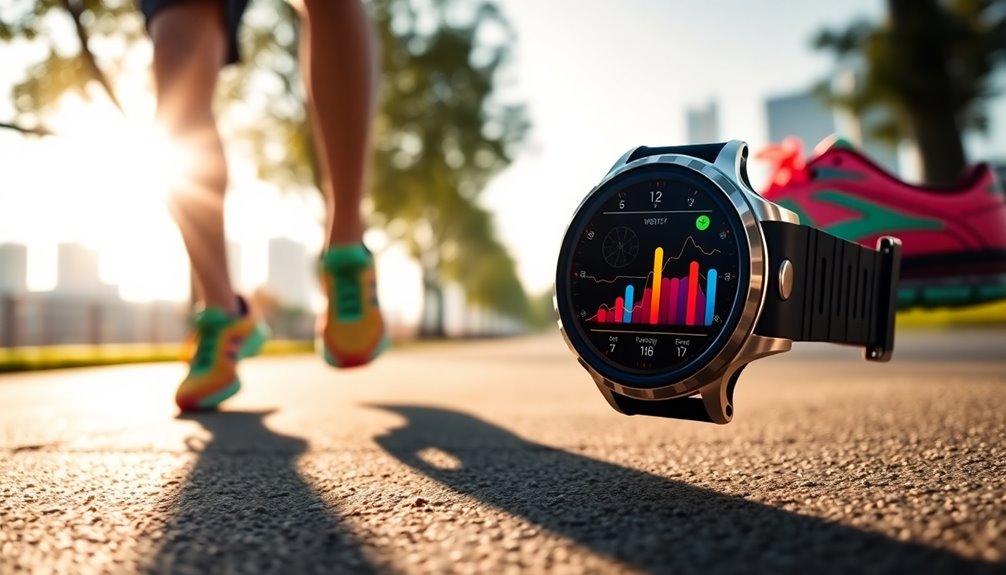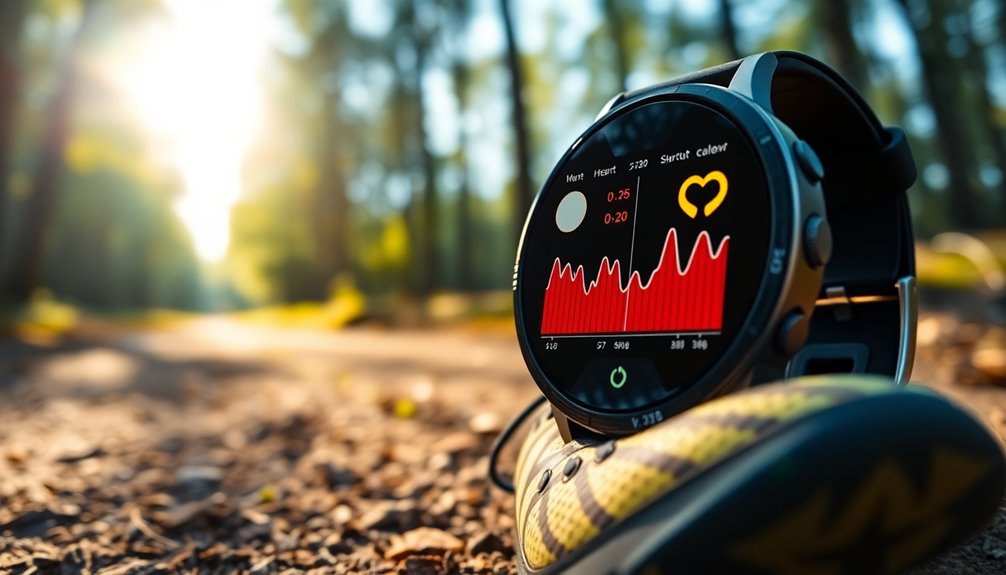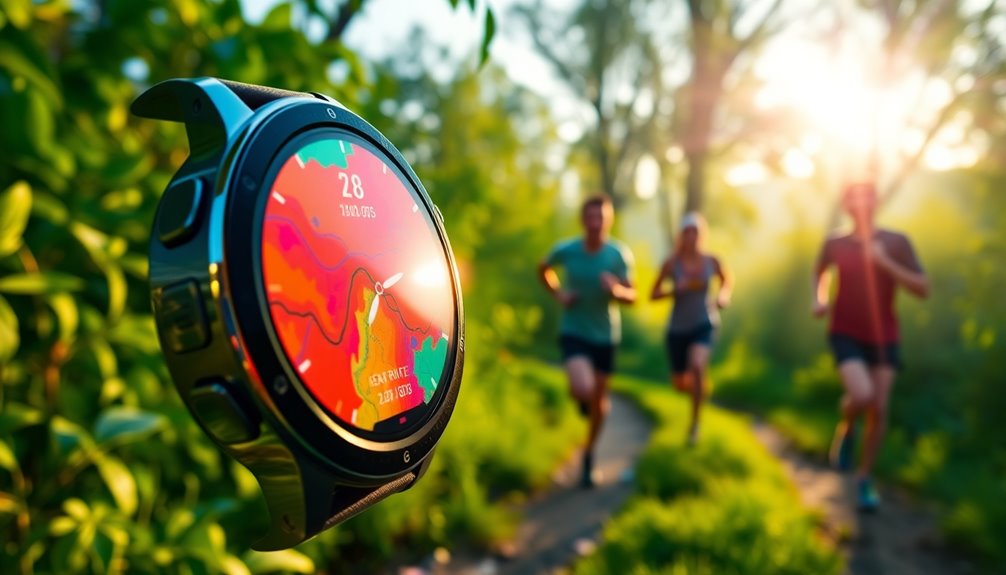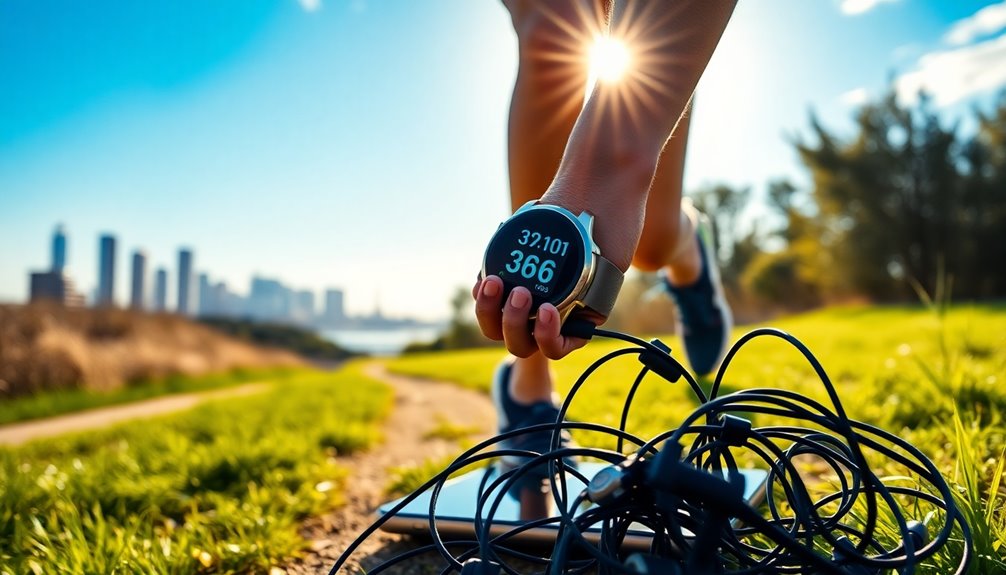Leveraging technology can drastically enhance your running experience. Wearable devices like heart rate monitors provide real-time feedback, helping you track performance and optimize training. With GPS tracking, you can analyze your pace and prevent injuries. Monitoring your heart rate guarantees you stay in the right training zone, building endurance effectively. Embracing these tools encourages personal growth and resilience as you face challenges. Keep discovering how these technologies can elevate your runs to a whole new level.
Key Takeaways
- Utilize wearable technology, like heart rate monitors, for real-time tracking of your performance and to receive immediate feedback during your runs.
- Implement GPS tracking to optimize your routes, monitor pace, and prevent injuries by analyzing performance data.
- Analyze heart rate zones to tailor your training programs, ensuring you train at the right intensity for optimal endurance gains.
- Use data-driven insights to create personalized training schedules that adapt based on your performance metrics and recovery needs.
- Connect with social networks to share performance data, receive motivation, and engage in friendly competition with other runners.
Embracing the Challenge of Change

Embracing change can feel intimidating, but it's often the catalyst for personal growth. As you immerse yourself in endurance sports, integrating wearable technology like heart rate monitors transforms your training.
By utilizing GPS tracking and a data-driven approach, you can optimize performance tracking and injury prevention. Understanding heart rate zones helps you tailor your training programs, ensuring you're pushing your limits wisely.
Each race, from marathons to 10Ks, challenges you to adapt and grow, highlighting the importance of consistency over sporadic efforts. The performance data you gather not only tracks your progress but also motivates you to embrace continuous improvement. As you navigate this journey, consider the principles of AI bifurcation to enhance your understanding of how technology can support your athletic endeavors.
As you push through these challenges, you'll discover that commitment to change leads to remarkable personal achievements and newfound resilience.
A Shift in Perspective

As you embrace the challenges of running, your mindset can profoundly influence your performance. The shift toward a data-driven approach means you're not just running for fun; you're actively monitoring your heart rate and other performance metrics.
With technology like the Apple Ultra Watch, you have real-time data that can transform your training. This data helps you make informed decisions, ensuring every run is a step toward better athletic performance.
By implementing a predictive model that correlates heart rate, stride length, and pace, you can manage your effort effectively. Remember, consistent effort and discipline are key. Additionally, exploring AI Ethicist Jobs in the tech industry can offer insights into how ethical considerations shape the development of wearable technologies.
Embrace this new perspective, and let technology guide you to improved race outcomes and personal growth in your running journey.
Heart Rate Monitoring and Data Analysis

While many runners focus on distance and speed, incorporating heart rate monitoring can greatly enhance your training strategy. By using wearable devices, you can track your heart rate in real-time, allowing for immediate feedback on your performance.
Analyzing the data collected helps you identify patterns and adjust your training plans accordingly.
- Optimize pacing based on heart rate zones
- Monitor recovery and readiness for intense workouts
- Track calories burned during various workouts
- Enhance endurance with targeted tempo runs
This approach not only improves your overall performance but also guarantees you're training effectively. Additionally, ensuring proper filter replacement frequency in your air purifier can help maintain a healthier environment while you train.
Learning Through Challenges

Facing challenges in running not only tests your physical limits but also sharpens your mental resilience. Each race you tackle, whether a marathon or an ultra, teaches you about persistence and grit.
With technology like the Apple Ultra Watch, you can monitor your heart rate and pace in real-time, helping you make informed decisions during training sessions. These metrics enhance your energy management strategies, allowing you to develop predictive models for your performance.
You learn the importance of steady effort over sporadic intensity, leading to significant improvements. Analyzing heart rate variability fosters a deeper understanding of your body, paving the way for tailored training adjustments. Additionally, staying informed on IRA investment strategies can offer insights into managing your finances while you pursue your running goals.
Embrace these challenges; they're essential for growth in both running and life.
How Technology Helps and Hurts

Technology can greatly enhance your running experience, providing real-time insights into key performance metrics like heart rate, pace, and distance.
Wearable technology, such as GPS watches and heart rate monitors, offers:
- Data-driven insights to improve your training schedule
- Performance comparisons with fellow runners
- Motivation through social fitness networks
- Instant feedback for tracking progress
However, it can also introduce challenges.
Data overload might lead to anxiety about performance comparisons, while inaccuracies in GPS tracking can mislead your training decisions.
Heart rate monitors can fail due to moisture or improper contact, yielding unreliable metrics.
While communication platforms can connect you with others, they may also create pressure to perform, detracting from the joy of running and impacting your overall health and fitness. Additionally, the increasing reliance on data privacy challenges raises concerns about how your performance data is collected and used by technology companies.
Frequently Asked Questions
What Is Leveraging the Use of Technology?
Leveraging the use of technology means you're tapping into tools and systems to improve your processes and outcomes.
It's about using devices, apps, or software to gain insights and streamline tasks. By embracing technology, you can enhance productivity, make informed decisions, and achieve better results.
Whether it's automating repetitive tasks or analyzing data, you're empowering yourself to work smarter and more efficiently, ultimately leading to more effective strategies in various areas of your life.
How Is Technology Improving Athletic Performance?
Imagine a coach whispering secrets of your body's performance directly into your ear.
Technology's transforming athletic performance by providing real-time metrics, like heart rate and speed, helping you fine-tune your training.
With advanced analytics, you can uncover patterns in your efforts, while virtual coaching delivers personalized plans tailored just for you.
Smart clothing and 3D scanning monitor your body's response, preventing injuries and refining your regimen, ensuring every workout brings you closer to greatness.
What Technology Is Used for Running?
When you think about technology used for running, consider wearable devices like GPS watches and fitness trackers.
These gadgets monitor your heart rate, distance, and speed, giving you valuable insights into your performance. Apps can analyze this data, offering personalized training plans tailored to your needs.
Plus, heart rate monitors guarantee you're pacing yourself effectively during workouts. Overall, technology helps you stay informed and optimize your running experience.
How Is Technology Used in Track and Field?
Imagine gliding like a gazelle, each stride powered by the latest technology.
In track and field, you harness tools like GPS trackers to disclose your speed and distance, while heart rate monitors pulse with your training intensity.
Coaches dissect your performance through video analysis, sculpting your technique.
With smartwatches tracking your metrics and 3D body scans revealing your strengths, you're not just training; you're evolving into the best athlete you can be.
Conclusion
As you lace up your shoes and embrace the digital age, remember that technology can be your greatest coach. It tracks your progress and helps you push boundaries, but don't let it overshadow the joy of running. Like a compass guiding you through uncharted trails, find balance in data and instinct. Ultimately, it's not just about the numbers; it's about the journey, the sweat, and the exhilaration of reaching new heights. Keep running, keep evolving!









